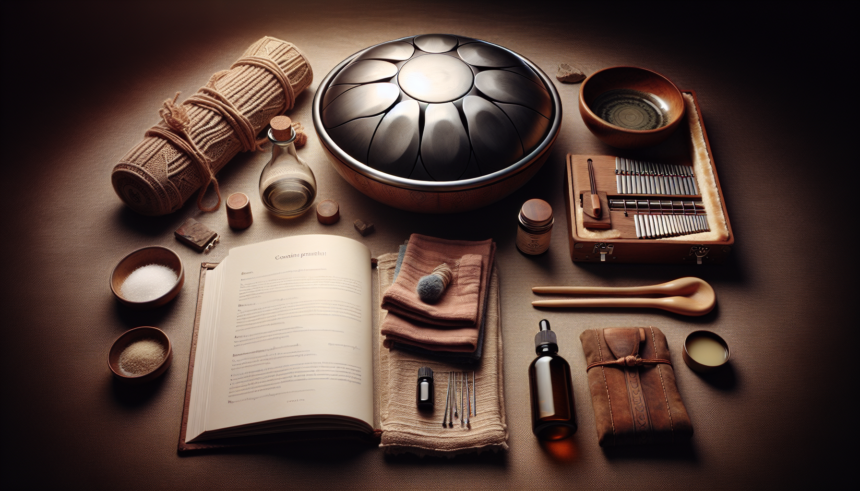The handpan is a mesmerizing musical instrument known for its beautiful, ethereal sounds and unique appearance. As a fusion of art and science, its creation requires painstaking craftsmanship. Thus, understanding how to care for your handpan is crucial to extending its life and preserving its distinctive sound quality. This article decodes the essential aspects of handpan care that every player should know.
Materials Matter
Handpans are primarily made from steel, though variations in the alloy composition and surface treatments can influence their care. Common materials include nitrided steel, stainless steel, and sometimes even raw steel. Nitrided steel is treated to be more corrosion resistant, making it a favored choice among players. Stainless steel handpans are also resistant to rust and corrosion but require slightly different care practices.
Cleaning Your Handpan
Regardless of the material, regular cleaning is vital. For nitrided and stainless steel handpans, a gentle cleaning routine can maintain their sound integrity and appearance. To clean your handpan:
- Use a soft, lint-free cloth to wipe down the surface after each use to remove oils and sweat.
- For a deeper clean, mix a solution of mild soap and warm water. Dampen a cloth in this solution and gently wipe the handpan.
- Dry the handpan thoroughly with a clean, soft cloth to prevent moisture buildup that could lead to rust.
Protecting Against Rust
Since handpans are primarily made of steel, they are susceptible to rust if not properly cared for. One of the most effective methods for rust prevention is oiling the handpan. Use a high-quality, non-abrasive oil such as Froglube or Phoenix oil, which are particularly designed for handpan care. To oil your handpan:
- Apply a few drops of oil to a clean, soft cloth.
- Evenly distribute the oil across the surface of your handpan, covering both the top and bottom.
- Allow the oil to sit for a few minutes, then buff the surface with a dry cloth to remove any excess oil.
Storage Considerations
Proper storage is another key aspect of handpan care. Keeping your instrument in a stable environment will help prevent damage over time. Here are some storage tips:
- Store your handpan in a dry, cool place away from direct sunlight to prevent heat-related damage.
- A padded, hard-case is ideal for protecting the handpan from physical impacts during storage and transport.
- If using a soft case, make sure it’s well-padded and avoid placing heavy objects on top of it.
- Periodic inspection of the storage area for signs of moisture or pest activity can further protect your handpan.
Handling and Play
How you handle and play your handpan can also affect its longevity. While handpans are robust instruments, they should still be treated with care:
- Avoid playing with rings or other jewelry that could scratch the surface.
- Use your fingertips and hands rather than sticks or mallets, as the latter can damage the instrument.
- Always place the handpan on a soft, supportive surface during play to prevent accidental dents or scratches.
Environmental Factors
Environmental factors significantly influence a handpan’s condition. Humidity, temperature, and air quality can all play a role:
- Humidity control is crucial. Excessive moisture can foster rust and corrosion, so consider using a dehumidifier in your storage area if you live in a humid climate.
- Temperature fluctuations can affect the metal, potentially leading to warping or de-tuning. Aim to keep your handpan in a consistently cool environment.
- Air pollutants, especially salty sea air, can expedite corrosion. If you live near the coast, cleaning and oiling your handpan regularly is even more critical.
Regular Maintenance
Regular maintenance goes beyond cleaning and oiling. Inspect your handpan periodically for any signs of damage or wear, such as minor dents or rust spots. Addressing these issues early can prevent more severe damage.
For minor rust, a gentle rub with a rust eraser or fine steel wool might do the trick, but be cautious and conservative with this approach to avoid scratching the surface. In cases of significant damage or wear, consulting a professional handpan tuner or manufacturer is advisable.
Insurance and Appraisal
If your handpan is a significant investment, insuring it might be worth considering. Musical instrument insurance can protect against theft, damage during travel, and other unexpected occurrences. Having your handpan appraised can aid in providing accurate replacement value for insurance purposes.
Conclusion
Caring for your handpan is an essential aspect of being a responsible player. By understanding the materials, implementing diligent cleaning routines, protecting against rust, and being mindful of environmental factors, you can significantly extend the life and maintain the sound quality of your instrument. Regular maintenance, proper storage, and careful handling play vital roles, as does considering insurance for added protection. Ultimately, a well-cared-for handpan not only looks beautiful but continues to provide joy and inspiration through its magical sounds for years to come.
FAQs
1. How often should I clean my handpan?
It’s a good practice to wipe down your handpan after each use to remove oils and sweat. A deeper clean with mild soap and water can be done monthly or as needed.
2. Can I use any oil to protect my handpan from rust?
It’s best to use high-quality, non-abrasive oils specifically designed for handpans, such as Froglube or Phoenix oil. Avoid using food oils, as they can go rancid over time.
3. What should I do if my handpan gets wet?
If your handpan gets wet, dry it thoroughly with a soft cloth immediately. Follow up with an oil treatment to prevent any potential rust or corrosion.
4. Can I leave my handpan in its case when not in use?
Yes, storing your handpan in a padded case is recommended to protect it from physical damage and environmental factors. Ensure the case is dry and free from moisture.
5. How can I tell if my handpan needs professional maintenance?
If you notice significant dents, rust spots that don’t come off with gentle cleaning, or a change in the sound quality, it’s a good idea to consult a professional handpan tuner or manufacturer.





